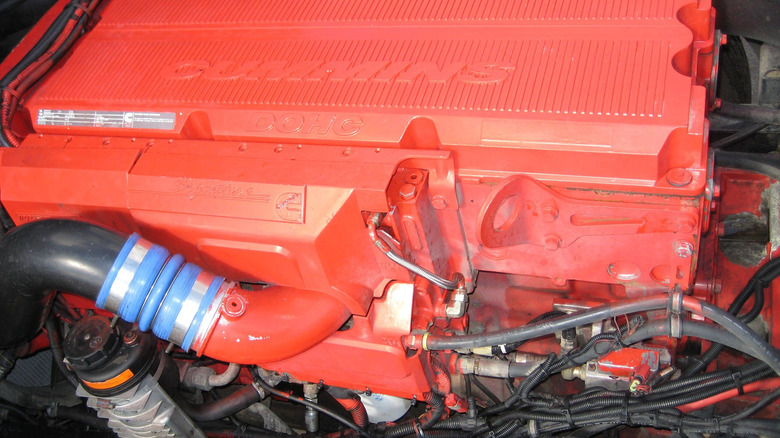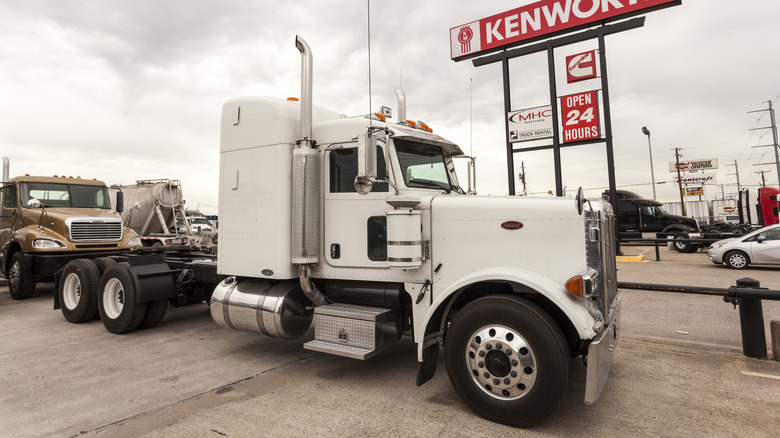Why Are Some Cummins Engines Colored Red?
For over 100 years, Cummins has been producing some of the industry's finest diesel engines, many of which have powered a wide range of vehicle types worldwide, from pickup trucks like the spacious Ram 1500 and 2500, to motorhomes, RVs, and light commercial vehicles. Several of its engines have gone toe-to-toe with some of the industry's best, like the Power Stroke and Duramax, and have managed to hold their own where it counts.
As such, the manufacturer has built a loyal following that knows its products in and out. If you ask a dedicated Cummins fan why some of the company's engines are colored red, they'll likely tell you that the color is a visual indicator of the ISX line of engines that power long-haul trucks, motorhomes, and buses.
That specific shade of red that Cummins uses is a bright hue called "Apex Red," a color as iconic as the engine it represents. Let's briefly examine the ISX; from what made it so iconic to its power output, which engine eventually replaced it, and why.
A worthy successor to the Cummins N14
Cummins introduced the ISX in 2001, presenting an engine that would stand among its most interesting in terms of power output and fuel efficiency. The ISX stepped in as the manufacturer's replacement for the N14 series of engines. The N14 lineup had established itself with a reputation for being rugged and equally durable powerhouses, but had to be retired due to emission regulations.
Given the N14's reputation, the ISX seemed to have big shoes to fill. Luckily, it had a few notable features that helped it find its place among diesel heads. The engine's then state-of-the-art Interact System had a high-pressure injection system that led to reduced emissions and improved fuel efficiency by providing precise control over fuel injection. In fact, the "IS" in the engine's ISX name stands for "Interact System."
Over the years, Cummins has continued to work on the ISX, including its transition to a common rail system in 2010, which offered even more precise fuel injection under load.
While powerful, early iterations of the ISX had a few issues
The ISX was rated between 430 and 620 horsepower, with a peak torque of 2,050 pound-feet. Add to that its superior fuel efficiency and ability to meet emissions standards compared to the N14, and it's easy to see why it caused such a stir. However, despite all this, the engine (at least its early variant) ended up among some of the worst engines Cummins has ever produced, according to users, due to issues such as problems with its exhaust gas recirculation valve and rocker arm issues that could lead to actual damage to the camshaft. Newer ISX variants addressed these issues and didn't have these issues, but ultimately it didn't matter.
Cummins stopped producing the ISX in the mid-2010s, as newer engines designed to meet updated emissions standards were being introduced. Among these new units was the X15, which is the current flagship unit of Cummins. A massive 14.9-liter engine, the X15 pushes out between 400 and 670 horsepower and 1,450 to 2,050 pound-feet of torque. It powers heavy hitters like the Kenworth W900L and Peterbilt 389, both of which we have counted among the most iconic semis powered by the Cummins X15 engine.


